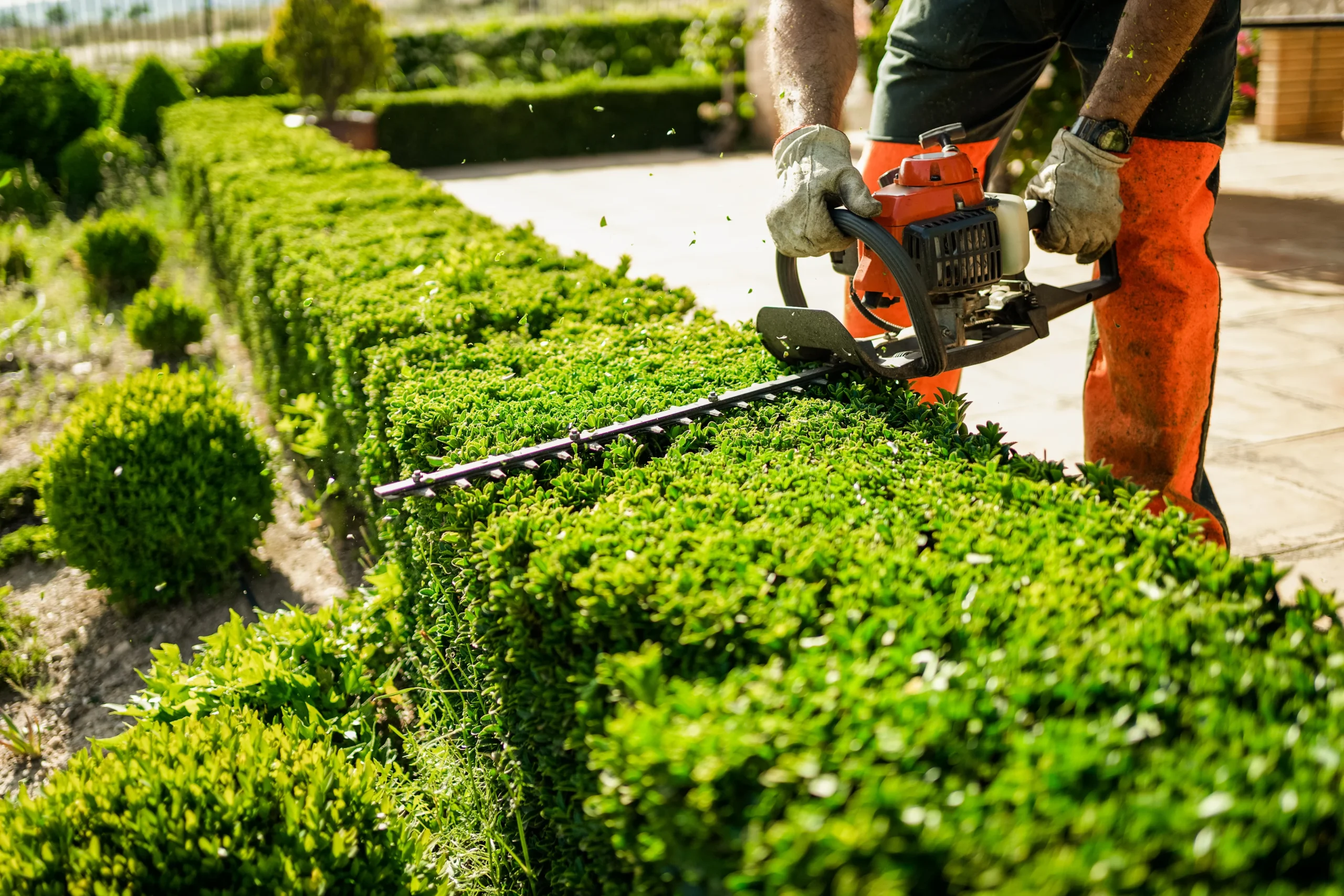
Keep Your Yard Safe and Beautiful with Expert Tree Trimming
Tree trimming isn’t just about appearance. It’s a vital part of maintaining a safe, healthy outdoor space. Left unchecked, overgrown branches can cause damage during storms. They may also block sunlight and restrict airflow to nearby plants. For homeowners, businesses, and property managers, regular trimming keeps trees in good shape and improves the value of the landscape.
In this blog, you’ll learn why tree trimming matters, when to do it, and how to do it right.
Why Tree Trimming Is Essential
Tree trimming does more than make your yard look neat. It’s about health and safety.
Prevents Property Damage
Heavy branches can fall without warning. Storms and high winds make this worse. Trimming weak or dead limbs keeps your home, car, and family safe.
Supports Tree Health
Cutting away infected or dead parts helps stop disease from spreading. Trimming also allows better light and air to reach every branch.
Improves Visibility and Access
Low-hanging branches block views and walkways. Regular trimming clears driveways, sidewalks, and signs. It also makes your yard easier to maintain.
Encourages Strong Growth
A well-trimmed tree grows with balance. It won’t lean or spread in unwanted directions. Pruning helps shape young trees and controls their future size.
Best Time of Year to Trim Trees
The best time to trim depends on the tree type and the reason for trimming.
- Winter (Dormant Season): Ideal for most trees. Less risk of disease and faster healing.
- Spring: Great for shaping and removing weak growth. Wait until after flowering if the tree blooms.
- Summer: Useful for controlling growth or fixing storm damage.
- Fall: Not usually recommended. Trees are going dormant and healing takes longer.
Always avoid trimming during active growth unless there’s an urgent safety issue.
Signs Your Trees Need Trimming
Watch for these signs that it’s time to trim:
- Branches are growing close to your home or power lines.
- There are dead, cracked, or hanging limbs.
- The tree has an odd or unbalanced shape.
- You notice signs of disease like fungi or leaf loss.
- Your tree is too thick to let light through.
If you notice any of these, it’s best to take action right away.
Basic Tree Trimming Tips
You don’t need to be an expert to trim small trees or shrubs. But safety and technique matter.
Use the Right Tools
Sharp, clean tools make cleaner cuts. Common tools include:
- Hand pruners for thin branches
- Loppers for medium branches
- A pruning saw for thicker limbs
Follow the 3-Cut Method for Large Branches
- Make an undercut a few inches from the trunk.
- Make a second cut from the top, just beyond the first.
- Finish with a clean cut at the branch collar (the swollen base).
This method prevents bark from tearing down the trunk.
Don’t Over-Trim
Never remove more than 25% of a tree’s canopy in one season. Over-pruning stresses the tree and may stop healthy growth.
Trim at the Right Angle
Always cut at a slight angle, just outside the branch collar. This helps the wound seal naturally and keeps disease out.
Common Mistakes to Avoid
Even well-meaning pruning can cause problems if done wrong. Avoid these errors:
- Topping the tree: Cutting off the top causes weak growth.
- Cutting too close: Removing the branch collar slows healing.
- Using dull tools: This causes jagged cuts and infection.
- Trimming at the wrong time: It can expose trees to pests and disease.
- Ignoring safety: Falling branches and ladders can be dangerous. Always wear safety gear.
If the tree is tall, near power lines, or very old, call a pro.
When to Call a Professional Tree Trimming Service
DIY trimming is fine for small trees. But there are times you should let the experts handle it.
- Tree limbs are near power lines.
- The tree is over 20 feet tall.
- You don’t have the right tools.
- The tree has signs of disease or pests.
- You’re unsure about how much to cut.
Arborists understand tree biology. They also know local regulations and safety guidelines.
Benefits of Hiring Experts
Trained professionals do more than cut branches. They inspect trees for risks and offer long-term care plans. Plus, they clean up the mess.
Many services offer seasonal maintenance and emergency trimming. This keeps your property safe all year.
Tree Trimming and Curb Appeal
Well-trimmed trees frame your house and highlight your landscape. It adds to your home’s value and can attract buyers if you’re planning to sell. Healthy trees also provide shade, which cuts cooling costs.
Proper trimming makes every other yard feature stand out—from flower beds to fences.
Environmentally Friendly Tree Care
Tree trimming is also good for the environment. It supports healthy ecosystems by reducing tree stress and improving root systems. That means better soil, cleaner air, and longer tree life.
Healthy trees are homes for birds and other wildlife. By trimming correctly, you support the whole landscape.
Conclusion
Tree Shaping and Trimming is more than a chore—it’s a smart investment in your property’s safety, beauty, and value. With the right care and timing, your trees will thrive for years.
Need reliable tree trimming? Get expert care that keeps your trees healthy, safe, and looking their best. Contact us today to schedule your professional tree trimming service!